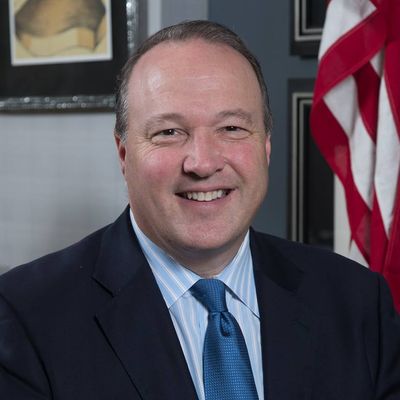
When California voters approved Proposition 14 in 2010, creating a top-two primary system, its supporters (notably Republican Governor Arnold Schwarzenegger and Lieutenant Governor Abel Maldonado, though a few Democrats backed it as well) argued that getting rid of partisan primaries would help moderates in both parties make it to general elections, presumably by attracting voters from the other party. Instead of the normal system of separate Democratic and Republican primaries, the idea was to put all candidates, regardless of party, in the same nonpartisan primary. The top-two finishers, regardless of their percentage of the vote, go onto the general election ballot.
The initial results of top two after its implementation in 2011 were not particularly positive for the “moderates will rule” hypothesis. And there’s a strong case that a very different “reform” — the institution of a politically neutral redistricting system run by an independent group of citizens — has done much more to restrain “extremism” in the two major parties.
And we’re now beginning to see some of the more perverse consequences of top two as pols learn to manipulate the system. They could, in fact, have a significant effect on the battle for control of the House this November. Dan Walters of CALmatters explains:
[T]he GOP may be pulling off one of history’s most audacious political coups, one that could save the seats of several embattled Republican members of Congress and potentially preserve the party’s control of the House….
In several of the most vulnerable districts with large numbers of potential Democratic challengers, well-known Republicans have also filed their candidacies. Under the state’s primary election system, the top two finishers in June face each other in November regardless of any party affiliation. With so many Democrats on the June ballot, the chances for Republican vs. Republican runoffs in those districts are high.
In some cases, it’s just a matter of Republicans running fewer candidates than Democrats in competitive open-seat contests. But there are also a couple of suspicious races involving sudden GOP competition against Republican incumbents:
Take, for instance, Orange County Congressman Dana Rohrabacher, who has faced sharp criticism for his apparent affection for Russian President Vladimir Putin and who represents one of seven GOP-held districts in California that voted for Hillary Clinton in 2016.
Rohrabacher has 15 challengers, including eight Democrats. But the one drawing the most attention is Scott Baugh, a former Republican assemblyman and former county GOP chairman.
Baugh insists that his bid to dislodge Rohrabacher is genuine, saying the congressman “has lost focus on what’s important.” But he’s also a longtime friend of Rohrabacher and the best known challenger so could easily wind up as the congressman’s only foe in November. If so, the seat would be guaranteed to remain in GOP hands.
In the old days, this sort of tactic was referred to as running a “loser,” a silent partner of a front-runner whose job was to undercut a rival. Maybe that’s an unfair accusation to make against Baugh, but there does seem to be a pattern emerging among California Republicans in these critical congressional races. Two other vulnerable House Republican incumbents, Jeff Denham and Duncan Hunter, have also drawn suspiciously convenient major intraparty opponents.
But it’s not just Republicans who could be manipulating top two in a manner that is alien to the centrist-encouraging advertising that accompanied creation of the new system. You won’t find this in print anywhere, but little birdies have told me that California progressives backing Gavin Newsom’s gubernatorial campaign and Kevin de León’s Senate bid are hoping a Republican makes the general election against Newsom. The theory is that dispatching the generally more centrist Democrat Antonio Villaraigosa in the primary would sideline the money of his charter-school-promoting backers (the primary source of ads for the former Los Angeles mayor) and enable progressives to focus their cash and energy on de León’s uphill struggle to knock off Senator Dianne Feinstein. Since no Republican is likely to win a statewide race in California these days, why allow a second Democrat to make the general election?
To be clear, there’s nothing inherently wrong with this progressive strategy; unlike the GOP “find a loser” tact, it’s not dishonest. But both practices do show that pols are figuring out how to game the top-two system. And there is something a bit unsettling about how relatively easy it is in some cases to use low-turnout primaries (so far top two has done nothing to lift California’s abysmal turnout levels for primaries) to control access to high-turnout general elections. That was, ironically, one of the complaints about partisan primaries made by top-ten promoters. Turns out you can’t take the politics out of politics. This is a rule that process-focused “reformers” really need to take to heart.






























